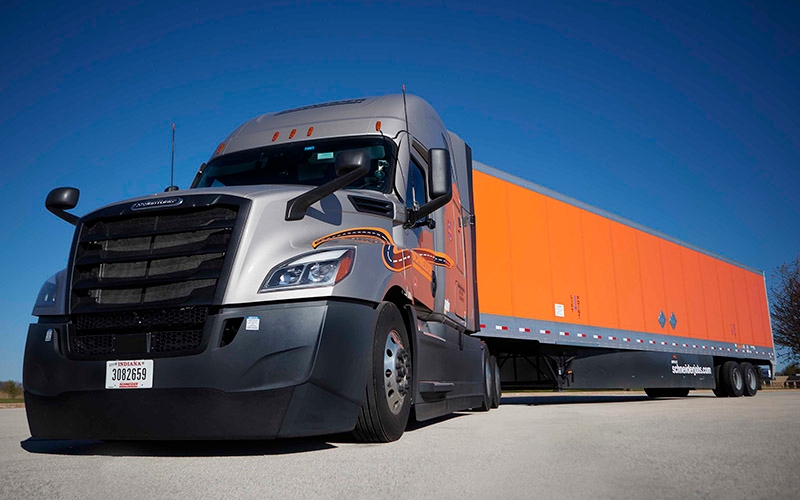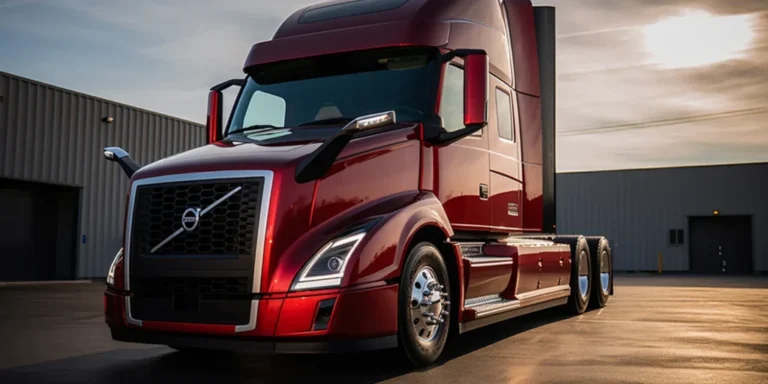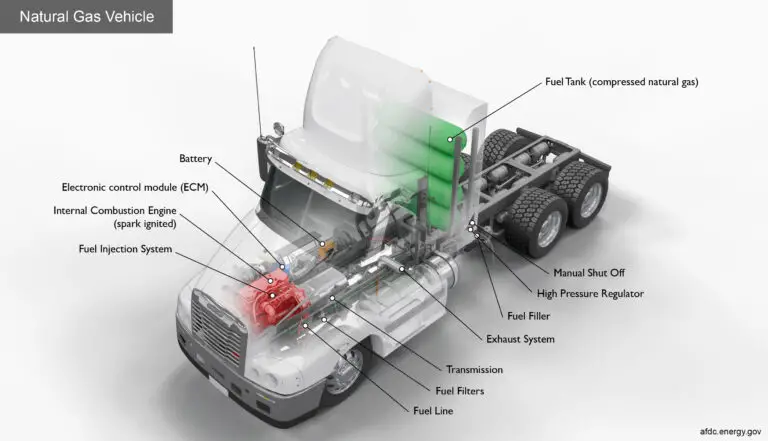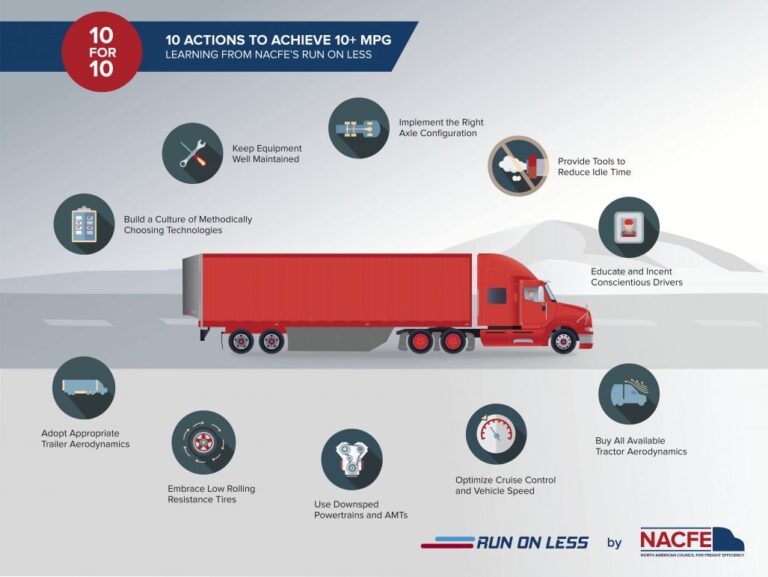
The semi-truck originated in the early 20th century in the United States. As a result of the need to transport goods more efficiently over long distances, the concept of the semi-truck emerged.
The semi-truck, also known as an articulated lorry, tractor-trailer, or big rig, has played a significant role in the transportation industry. Its design consists of a towing engine, known as a tractor, and a semi-trailer that can be detached. This innovation revolutionized the way goods are transported, allowing for larger loads and more efficient delivery.
Today, semi-trucks are an integral part of the global economy, transporting goods across countries and continents. Understanding the origins and development of the semi-truck provides insight into the evolution of modern logistics and its impact on global trade and commerce.

Credit: www.amazon.com
Navigate As You Want: [show]
The Evolution Of Transportation
The evolution of transportation has come a long way, starting from ancient modes of transportation to the invention of the automobile. In ancient times, people relied on various means to move from one place to another. Some of the notable ancient modes of transportation included walking, animal-drawn carts, and boats.
The concept of a self-propelled vehicle gained momentum during the 18th century, leading to the invention of the automobile. The first practical automobile was developed in the late 19th century by Karl Benz and Gottlieb Daimler. This invention revolutionized transportation and paved the way for the modern semi-truck.
| Year | Invention |
|---|---|
| 1885 | First practical automobile by Karl Benz |
| 1895 | Development of the semi-truck |
The semi-truck, also known as a tractor-trailer or articulated lorry, was designed to carry heavy loads over long distances. Its ability to connect the tractor unit (engine) with a trailer allows for efficient transportation of goods. Today, semi-trucks play a crucial role in the global supply chain, transporting goods across countries and continents.
Birth Of The Semi Truck
Early Trucks and Their Limitations The early trucks were limited in terms of power and carrying capacity. They were often cumbersome and inefficient, unable to handle heavy loads or travel long distances. The lack of suitable infrastructure and road conditions also posed significant challenges for these early vehicles.
The Development of the Semi Truck The development of the semi truck was a significant evolution in transportation. It allowed for increased power, larger carrying capacity, and improved efficiency. With advancements in engineering and technology, semi trucks became essential for long-haul transportation and played a crucial role in the growth of the logistics industry.
The Impact Of Semi Trucks
Semi trucks have revolutionized the shipping industry by enabling efficient transportation of goods over long distances. They have had a significant impact on economic growth by streamlining the supply chain process, reducing shipping costs, and increasing the speed of deliveries.
These robust vehicles have a rich history, with their origins dating back to the early 20th century. They have continually evolved to meet the demands of modern commerce, becoming essential for the movement of goods across the country.

Credit: schneiderjobs.com
Modern Semi Truck Technology
The modern semi truck has come a long way in terms of technology, focusing on advancements in efficiency and safety. Manufacturers have been constantly improving and refining semi trucks to meet the demands of the industry.
One major area of focus has been on enhancing fuel efficiency and reducing emissions. This has been achieved through the use of aerodynamic designs, lightweight materials, and advanced engine technologies. Improved aerodynamics, such as streamlined body shapes and roof fairings, have significantly reduced wind resistance and drag. Additionally, the adoption of lighter materials has contributed to increased fuel efficiency.
Another aspect that has seen significant development is safety. Advanced driver-assistance systems (ADAS) such as collision avoidance systems, blind-spot detection, and lane departure warning systems have been implemented to enhance the safety of both truck drivers and others on the road. The integration of these technologies has helped to reduce accidents and improve overall road safety.
Emerging trends in semi truck design include the development of autonomous driving capabilities, electric and hybrid powertrains, and connectivity features. With autonomous driving, the aim is to increase efficiency and reduce human errors. Electric and hybrid powertrains are being explored to reduce emissions and dependence on fossil fuels. Connectivity features enable real-time data collection, allowing fleet managers to optimize operations and improve vehicle performance.
Challenges And Future Of Semi Trucks
Did you ever wonder where semi trucks came from? These powerful vehicles have a rich history and have undergone significant changes over the years. Semi trucks, also known as tractor-trailers or big rigs, were first introduced in the early 20th century. They revolutionized the transportation industry by providing a more efficient way to transport goods over long distances.
Today, semi trucks face various challenges and have a promising future ahead. One of the major concerns is environmental impact. As society becomes more environmentally conscious, there is a growing demand for greener transportation options. Electric and autonomous trucks are emerging as potential solutions to address these concerns.
The rise of electric trucks offers numerous benefits. They produce zero emissions, reduce air pollution, and contribute to a cleaner environment. Furthermore, electric trucks have lower maintenance costs and are quieter compared to their diesel counterparts.
Autonomous trucks, on the other hand, have the potential to transform the trucking industry in terms of safety and efficiency. These self-driving vehicles can operate continuously, minimizing driver fatigue and increasing productivity. Additionally, autonomous trucks can be programmed to optimize fuel efficiency and reduce traffic congestion.
The future of semi trucks is undoubtedly exciting. As technology continues to advance, we can expect to see more electric and autonomous trucks on the roads, contributing to a more sustainable and efficient transportation industry.

Credit: www.arnolditkin.com
Frequently Asked Questions Of Where Did Semi Truck Come From
Where Did Semi Trucks Originate From?
Semi trucks, also known as tractor-trailers, have their roots in the United States. They emerged in the early 20th century as a solution to the need for more efficient transportation of goods over long distances. With the advent of improved roads and the increase in commerce, semi trucks became a staple in the transportation industry.
How Do Semi Trucks Work?
Semi trucks operate on a combination of a powerful engine and a trailer designed to carry goods. The engine propels the truck forward while the trailer provides the necessary space for cargo. The coupling between the truck and trailer allows for flexibility and maneuverability, making semi trucks an ideal choice for long hauls and transportation of large quantities of goods.
What Are The Benefits Of Using Semi Trucks For Transportation?
Semi trucks offer various advantages in the transportation industry. They have large carrying capacities, enabling efficient transportation of goods in bulk. Their ability to navigate highways and long distances makes them ideal for logistics companies. Additionally, semi trucks provide a cost-effective and reliable means of transporting goods, minimizing the need for multiple smaller vehicles.
How Have Semi Trucks Evolved Over Time?
Over time, semi trucks have undergone significant advancements. They have become more fuel-efficient, environmentally friendly, and technologically advanced. Safety features such as anti-lock brakes and stability control systems have been implemented. Additionally, improvements in aerodynamics and engine technology have led to better performance and reduced emissions, making modern semi trucks more sustainable and efficient.
Conclusion
The origins of semi trucks can be traced back to the early 20th century when the need for transporting goods efficiently became crucial. Over the years, these vehicles have undergone significant advancements and improvements, contributing to the growth of the transportation industry.
With their powerful engines, large cargo capacity, and versatility, semi trucks have revolutionized the way goods are transported worldwide. Today, they continue to play a vital role in ensuring the smooth delivery of goods across long distances, enhancing productivity and efficiency.





